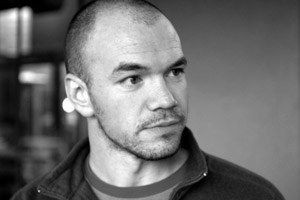
Image courtesy Cliff Lyon.
In December 2008, climate activist Tim DeChristopher successfully disrupted a Bureau of Land Management (BLM) auction of thousands of acres of public land in Utah by posing as a bidder. Auctioning off the land, which bordered national parks and monuments, was one of the last actions of the Bush administration and a farewell handout to the oil and gas industry. DeChristopher, a 27-year-old student at the University of Utah at the time, bid $1.79 million on more than 22,000 acres of land.
DeChristopher—or Bidder No. 70, as he was known that day—didn’t have the money to actually buy the plots, of course, but he did succeed in disrupting their sale before BLM figured out what he was up to and had him arrested. And when Ken Salazar took over as Secretary of the Interior in 2009, he invalidated the lease sale, based on the conclusion that the previous administration had not adequately evaluated the environmental impact of the sales. Even though DeChristopher’s position on the sale was essentially validated, federal prosecutors are seeking criminal charges against him. His trial in federal court in Salt Lake City began this week, and he faces two felony charges for disrupting the auction. If convicted, he faces up to 10 years in prison and $750,000 in fines.
The trial began on Monday with the jury selection and continues on Tuesday. The judge has already thrown out the defense that his actions were necessary to prevent environmental damage on this land and, more broadly, the exacerbataion of climate change. (See our 2009 interview with DeChristopher, as well as a more recent interview in Yes! on the question of whether his actions should constitute a crime.) But the case that DeChristopher and his supporters will attempt to make in court is that this was an act of civil disobedience to prevent environmental harm rather than a criminal act.
The Salt Lake City Weekly is covering the trial and the actions around the city in support of DeChristopher. How the case plays out will certainly be worth watching in the coming days.













